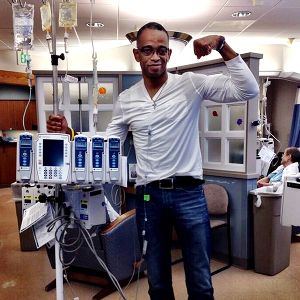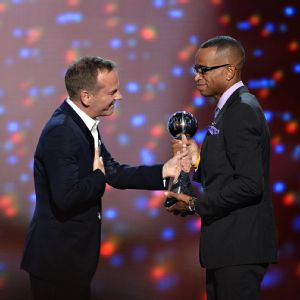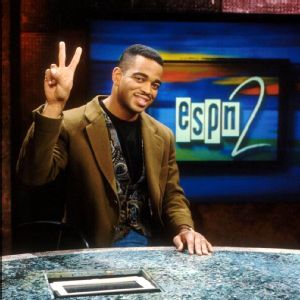
Maher Hathout, an Egyptian-born cardiologist who became an influential American Muslim leader, preaching interfaith comity and helping to sustain the Islamic faithful in the United States against the backlash after the 9/11 attacks, died on Jan. 3 in Duarte, Calif. He was 79.
His death, at a hospital near Los Angeles, was confirmed by Salam al-Marayati, president of the Muslim Public Affairs Council, which Dr. Hathout helped found in 1988. He had been treated for liver cancer.
For decades Dr. Hathout encouraged American Muslims to join the multicultural mosaic of the United States.
“He represented free and critical thinking in helping Muslims face contemporary challenges and bring congruence between living as a Muslim and as an American,” Mr. Marayati said. “He influenced many young Muslims to participate in civic life, people who now lead in major government, media and philanthropic institutions.”
Both committed to his religion and patriotic to his adopted country, Dr. Hathout, the author of three books on Islam, called on American Muslims to embrace their dual identity, admonishing them that home was defined not by their roots in the Middle East or South Asia but by their present and future.
“Home is not where my grandparents are buried,” he said, “but where my grandchildren will be raised.”
That vision shaped his response to radical Islam. He repeatedly challenged reflexive juxtapositions of Muslims with terrorists, explaining to non-Muslims that terrorism was un-Islamic, and that the true meaning of “jihad” is an internal spiritual struggle of purification and promotion of social justice and human rights.
After Muslim suicide bombers killed 52 people in central London in 2005, Dr. Hathout carried that message directly to Muslims.
In a sermon to the Islamic Center of Southern California, which he also helped found, he declared: “It is our responsibility — young and old, parents, sons and daughters, teachers and students, leaders and activists — to rally together to plug the holes through which the distorting predators pass through and push the substances that kill brain cells and fill hearts with despair and hate.”
Dr. Hathout himself was no stranger to conflict.
Born in Egypt on Jan. 1, 1936, he enlisted as a student in the protest movement against Britain’s half-century occupation of his country. He was imprisoned for almost five years. After earning bachelor’s and medical degrees at Cairo University, he left Egypt in 1968 for Kuwait, then moved in 1971 to Buffalo, where he worked as a cardiologist and became active in the Muslim community.
Six years later, he settled in Los Angeles. He was joined there by his older brother, Dr. Hassan Hathout, at the Islamic Center of Southern California, which was notable for having placed a woman on its board of directors as early as 1952. There he helped start a coeducational youth group and a weekly nationally televised program about Islam.
In 1991, Dr. Hathout helped found the Religious Coalition Against War in the Middle East, became the first Muslim chairman of the Los Angeles Interfaith Council, and in 2000 was the first American Muslim to deliver the invocation at a Democratic national convention, in Los Angeles. Dr. Hathout was also a charter member of the Pacific Council on International Policy.
“He had the innate ability to embrace a lot of people who many people wouldn’t have embraced because of that ability to see something good and powerful in someone else,” said the Rev. Dr. Gwynne Guibord, an Episcopal priest who invited Dr. Hathout to join the board of her own interfaith centerin Los Angeles.
He is survived by his wife, Dr. Ragaa Hathout; two children, Dr. Gasser Hathout and Samer Hathout-Blackshire; and four grandchildren.
Dr. Hathout had been prominent among American Muslims and leaders of other religions well before 2001, but the Sept. 11 attacks and their aftermath helped introduce him to a wider community seeking a credible, progressive voice that preached pluralism and integration.
Shortly after the attacks, Dr. Hathout said that Osama bin Laden’s appeal to Muslims to emulate the Sept. 11 terrorists had debased Islamic theology.
The Quran permitted “anyone to call on God for anything,” he explained. That said, he added, “It is for the Almighty to make the judgment of whether to act.”
____________________________________________________
Maher Hathout (January 1, 1936 – January 3, 2015) was a leading American-Muslim community leader of Egyptian origin, and widely regarded as the Father of the American Muslim identity.[1] Hathout helped to found the Muslim Public Affairs Council and spoke extensively against Islamic radicalism.[2]
Born in Cairo, Egypt in 1936, Hathout eventually moved to Buffalo, New York, and then to Los Angeles. He immersed himself in volunteering at the Islamic Center of Southern California (ICSC) as Chairman and Spokesperson. One of the most progressive mosques in the country – the ICSC had a woman on its board of directors in 1952 – the Islamic Center became a vehicle for a vision of Islam in America that is rooted in what Hathout called the definition of home: "Home is not where my grandparents are buried, but where my grandchildren will be raised."
Hathout stressed throughout his life that being a faithful Muslim was entirely compatible with being a proud American, and that Islam is a religion of coexistence, reason and moderation.
He was also among the pioneers of interfaith engagement within the American Muslim community, helping found the Religious Coalition Against War in the Middle East with Rev. George Regas and Rabbi Leonard Beerman in 1991. Hathout was a charter member of the Pacific Council on International Policy, the western partner of theCouncil on Foreign Relations, and served on the Board of Directors of the Interfaith Alliance and Claremont Lincoln University.
Over the years, Hathout was invited repeatedly to Capitol Hill and the State Department to address a variety of topics, such as "Islam and U.S. Policy," "Islamic Democracy," "Emerging Trends in Islamic Movements," and "The Future of the Middle East." He was also the first Muslim invited to give the invocation prayer at the Democratic National Convention in 2000.[3]
Hathout was the recipient of many awards, including the George Regas Courageous Peacemaker Award, the Islamic Shura Council of Southern California’s Lifetime Service Award, the South Coast Interfaith Council Award for his life-long commitment to interfaith work and the Los Angeles County John Allen Buggs Award for excellence in human relations. He died of cancer in Duarte, California on January 3, 2015.[4]
___________________________________________________________________________________





 ESPN's Stuart Scott changed the way we talked about sports, and in doing so put himself on ESPN's Mount Rushmore, writes Michael Wilbon.
ESPN's Stuart Scott changed the way we talked about sports, and in doing so put himself on ESPN's Mount Rushmore, writes Michael Wilbon.  J.A. Adande shares his memories of longtime ESPN anchor Stuart Scott, who died Sunday at age 49.
J.A. Adande shares his memories of longtime ESPN anchor Stuart Scott, who died Sunday at age 49. Stuart Scott knew what his audience needed -- and he provided it by being himself, Scoop Jackson writes.
Stuart Scott knew what his audience needed -- and he provided it by being himself, Scoop Jackson writes. 



